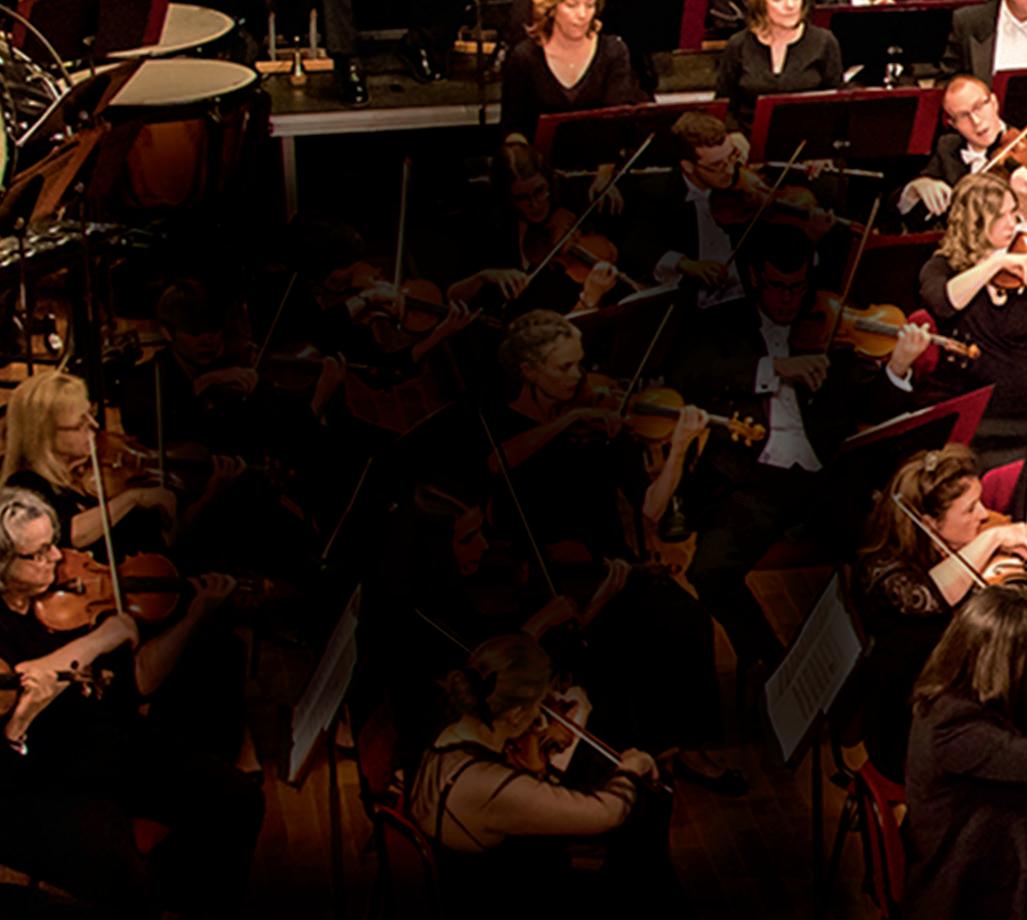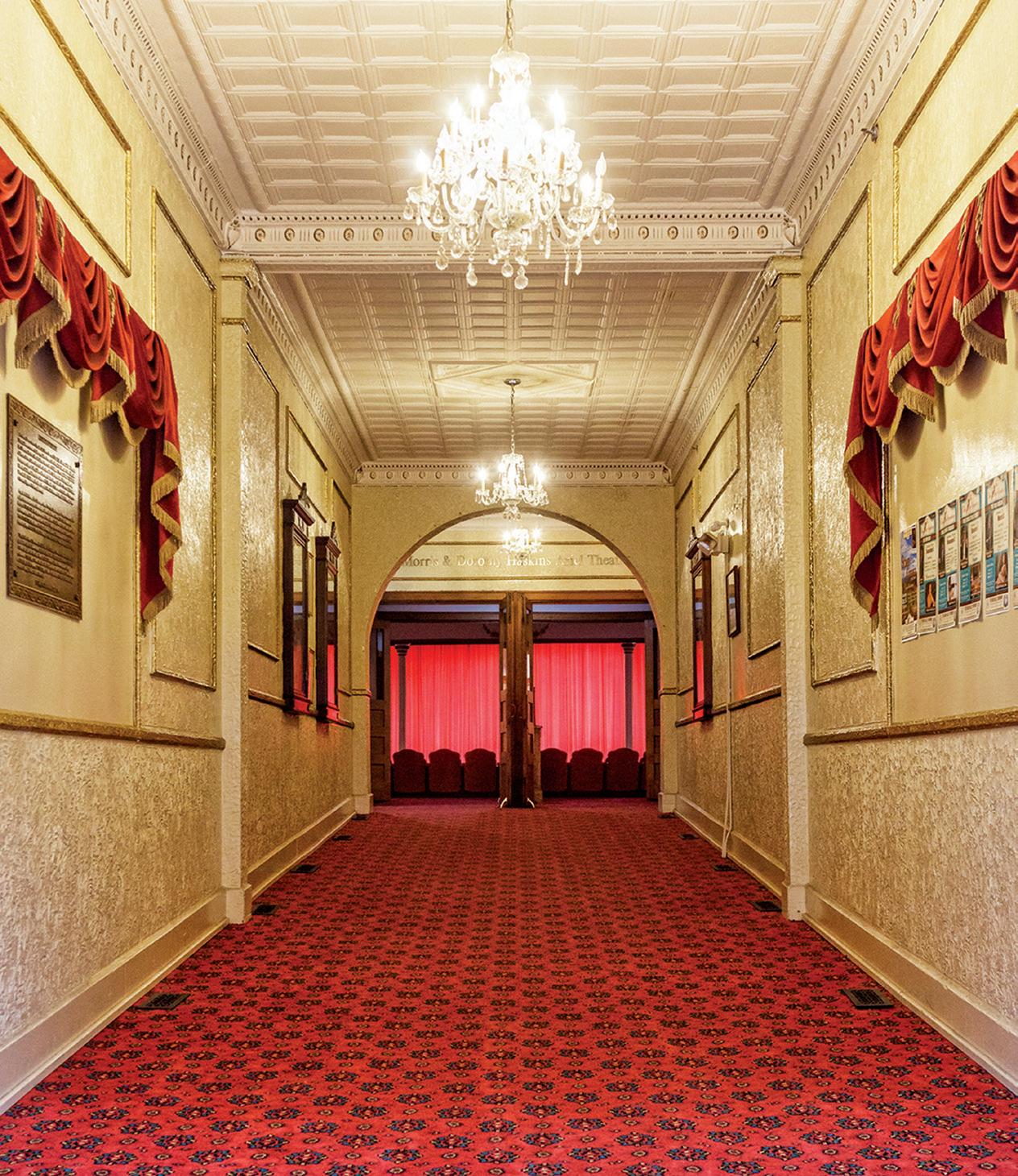
4 minute read
Small town, BIG sounds
BY KEVIN WILLIAMS; PHOTOGRAPHS COURTESY OHIO VALLEY SYMPHONY
When Lora Lynn Snow first saw the inside of the Ariel Opera House in 1987, the first thing she noticed, of course, was the quarter-century’s worth of bird droppings that coated just about everything. But almost immediately, she saw beyond the disrepair of the once-spectacular Gallipolis theater. Where others could only see pigeon poop, Snow saw possibilities.
“I ignored the piles of rubble,” Snow remembers. “I heard the building singing, and it was love at first sight.”
Today, thanks to that love affair — and a lot of hard work — Gallipolis (population 3,300) is home to one of the most distinctive, if unlikely, symphonies in the country. The Ohio Valley Symphony, replete with tubas, French horns, cellos, bass violins, flutes, harps, trumpets, oboes, clarinets, bassoons, and more, begins its 34th season of performance at the Ariel this month.

The hills that hem in this tiny Ohio River town on the southern tip of the state are truly alive with the sound of music.
Homecoming
But it wouldn’t have happened if it weren’t for Snow. An oboist who grew up in Charleston, West Virginia, Snow had earned bachelor’s and master’s degrees from Ohio State before moving to Arkansas.
There, she played in several ensembles and taught at the University of Arkansas at Little Rock for a time before she and her husband decided they needed a change. “It was so hot, just an oppressive heat,” she says.
So they moved back closer to home, to Gallia County, in 1980. She taught music in the Gallia County Local School District and at the University of Rio Grande and played in several regional symphonies and chamber groups.
It actually took a few years before she discovered her calling.
Discovery
The French refugees who settled Gallipolis in the late 1700s had brought with them a strong appreciation for the arts, and that influence has always been apparent. It’s no surprise that the Ariel sprang up there in 1895 at the height of the “opera house” movement. The Ariel hosted music and theater programs, vaudeville acts, and movies for decades.
Eventually, though, Hollywood’s economics overpowered the Ariel, and the theater shuttered in the early 1960s. It stayed that way for 25 years. Snow, growing dissatisfied with her experiences with cutthroat musicians and taskmaster conductors, decided she wanted to start her own symphony, one that would operate in her own kinder, gentler way.
But in tiny Gallipolis? There were plenty of snickers and skepticism at first, but she knew she could count on the area’s rich arts history to draw upon. What she didn’t have was a proper venue — until someone mentioned the town’s old, decrepit opera house.

“I had no idea the Ariel was there,” Snow says. “I finagled my way inside, and the acoustics were phenomenal. They just don’t build them like that anymore.”
Rejuvenation
Right away, Snow began raising funds. She held a community cleaning party. She even consulted the Centers for Disease Control about the best way to remove pigeon droppings. So, long before COVID-19 made N-95 s an everyday sight, masked stagehands went high into the rafters to methodically uncover the Ariel’s former glory, from the top down.
The Ohio Valley Symphony performed its first concert on April 1, 1989, and officially moved into the Ariel at its grand reopening on June 9, 1990. Renovations have continued in the years since, and the Ariel today hosts not only the OVS, but a bevy of other events: music and theater productions, arts classes, even weddings. To this day, Snow still plays with the symphony as its principal oboist. So if something is “off,” whether with acoustics in the hall or chemistry among the musicians, she’ll know about it.
Small-town nice
Snow is the only musician in the symphony who’s based in Gallipolis. Most come in from larger cities like Pittsburgh or Cincinnati — drawn, Snow says, by the OVS’s reputation as a nice place to play, in terms of the venue and the personalities of the ensemble and the entire town. Members of the community, in fact, house many of the visiting musicians, which helps to foster bonds between the community and the symphony.
Concertmaster Manami White, for example, an awardwinning and internationally acclaimed violinist based in Cincinnati, says she herself has enjoyed that experience and that lifelong friendships have been forged because of those opportunities.
It’s led to a loyal and supportive following in Gallipolis, as locals who might otherwise have never stepped foot in a symphony hall have been drawn to the Ariel. The quality of the programming, of course, doesn’t hurt, either.

“When you go to a concert, it should give you shivers, make you gasp,” Snow says. “Art without that is pretty empty. If you care for the artists and provide a positive work environment, the audience will notice. We have a rep as a nice place to play.”
Snow says that, inevitably, newly arrived musicians will finish their first gigs and tell her, often incredulously, how much fun they had.
“Working hard and having fun are not exclusive,” Snow says. “I’ve always felt doing both was a good thing.”
The symphony’s 34th season
Sept. 16 — “Around the Campfire,” with guest conductor Luke Frazier, founder of the American Pops Orchestra.
Nov. 4 “Salute to Our Veterans,” with Carl Topilow, founding conductor of the Cleveland Pops.
Dec. 2 — “The Christmas Show!” — with Steven Huang, newly named conductor of the New Westchester Symphony in White Plains, N.Y.
March 16 — “The Enigmatic Elgar,” conducted by François López-Ferrer, resident conductor of the Académie of the Opéra de Paris.
April 27 — “Brahms and Beyond,” conducted by West Virginia State Philharmonic director Scott E. Woodard.
Every concert ticket includes a 6:45 p.m. pre-concert chat with the maestro and soloist of the evening, as well as a post-concert reception.
Visit https://arieltheatre.org for details.










